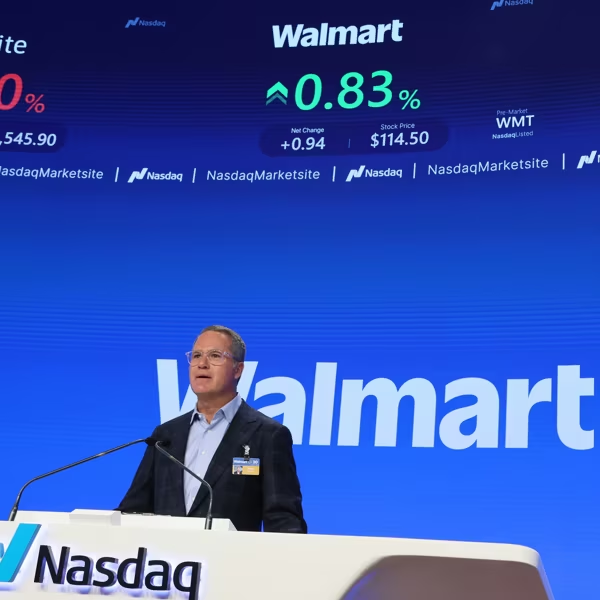NYT Hopes India Can Avoid China's Plight: a High-Paid, Well-Educated Workforce
A front-page lead New York Times story, headlined "As Rivals Falter, India's Economy Is Surging Ahead" (2/17/15), is mainly valuable for the insight it provides into what the Times considers to be a healthy economy-and who that economy is supposed to benefit.
A front-page lead New York Times story, headlined "As Rivals Falter, India's Economy Is Surging Ahead" (2/17/15), is mainly valuable for the insight it provides into what the Times considers to be a healthy economy-and who that economy is supposed to benefit.
"As other big developing markets stumble, India is emerging as one of the few hopes for global growth," Times business reporter Keith Bradsher declares. Though the piece mentions countries like Russia and Brazil (both of whom are hurt by falling oil prices), it's mainly a comparison between India and China: "China's economy is slowing," Bradsher writes, while "the growth in India's economy, long a laggard, just matched China's pace in recent months."
There aren't a lot of numbers in the Times piece, so it's useful to pause here and note that according to the IMF database, China's per capita GDP (measured in terms of purchasing power) grew by 8.6 percent last year, vs. 6.0 percent for India. So any stumbling, slowing or faltering seen in China's economy is based on forecasts of future growth-which are notoriously unreliable, though often given great credence in articles like these.
So take Bradsher with a several grains of salt when he writes that "India is riding high on the early success of Prime Minister Narendra Modi and a raft of new business-friendly policies instituted in his first eight months." What exactly, though, does he mean by "business-friendly policies"? He gives a for-instance:
Would-be builders of large factories also worry about India's stringent labor laws, including essentially lifetime employment guarantees for unskilled or semiskilled workers with at least two years' experience.... Those labor law protections are starting to erode. Many companies rely increasingly on contract workers, whom they require to leave after a single year, circumventing the employment guarantees.
Progress!
While India is "riding high" by taking job security away from Indians, other countries are taking a different route-apparently, from the Times' perspective, a misguided one, since it's causing "troubles":
India is also profiting from the troubles of other emerging markets.
China's investigations of multinationals, persistent tensions with neighboring countries and surging blue-collar wages have prompted many companies to start looking elsewhere for large labor forces.
Yes, "surging blue-collar wages" are included by the New York Times in the category of "troubles."
Another "problem" China has is that its workforce is becoming too educated; as the caption for a graph that accompanies Bradsher's piece puts it:
The supply of 15- to 24-year-olds, the prime age for factory workers in emerging markets, is rising in India. By contrast, it is plunging in China because of the "one child" policy, and a sharp increase in college attendance has made the problem more acute.
As economist Dean Baker (Beat the Press, 2/18/15), one of the most astute critics of corporate media business coverage, observes:
From the standpoint of businesses looking for cheap labor this might be bad news, but from the standpoint of those who would like to see poor people lifted out of poverty, this sounds like very encouraging news.
It's not hard to see from whose standpoint New York Times economics coverage is written.
An Urgent Message From Our Co-Founder
Dear Common Dreams reader, The U.S. is on a fast track to authoritarianism like nothing I've ever seen. Meanwhile, corporate news outlets are utterly capitulating to Trump, twisting their coverage to avoid drawing his ire while lining up to stuff cash in his pockets. That's why I believe that Common Dreams is doing the best and most consequential reporting that we've ever done. Our small but mighty team is a progressive reporting powerhouse, covering the news every day that the corporate media never will. Our mission has always been simple: To inform. To inspire. And to ignite change for the common good. Now here's the key piece that I want all our readers to understand: None of this would be possible without your financial support. That's not just some fundraising cliche. It's the absolute and literal truth. We don't accept corporate advertising and never will. We don't have a paywall because we don't think people should be blocked from critical news based on their ability to pay. Everything we do is funded by the donations of readers like you. Will you donate now to help power the nonprofit, independent reporting of Common Dreams? Thank you for being a vital member of our community. Together, we can keep independent journalism alive when it’s needed most. - Craig Brown, Co-founder |
A front-page lead New York Times story, headlined "As Rivals Falter, India's Economy Is Surging Ahead" (2/17/15), is mainly valuable for the insight it provides into what the Times considers to be a healthy economy-and who that economy is supposed to benefit.
"As other big developing markets stumble, India is emerging as one of the few hopes for global growth," Times business reporter Keith Bradsher declares. Though the piece mentions countries like Russia and Brazil (both of whom are hurt by falling oil prices), it's mainly a comparison between India and China: "China's economy is slowing," Bradsher writes, while "the growth in India's economy, long a laggard, just matched China's pace in recent months."
There aren't a lot of numbers in the Times piece, so it's useful to pause here and note that according to the IMF database, China's per capita GDP (measured in terms of purchasing power) grew by 8.6 percent last year, vs. 6.0 percent for India. So any stumbling, slowing or faltering seen in China's economy is based on forecasts of future growth-which are notoriously unreliable, though often given great credence in articles like these.
So take Bradsher with a several grains of salt when he writes that "India is riding high on the early success of Prime Minister Narendra Modi and a raft of new business-friendly policies instituted in his first eight months." What exactly, though, does he mean by "business-friendly policies"? He gives a for-instance:
Would-be builders of large factories also worry about India's stringent labor laws, including essentially lifetime employment guarantees for unskilled or semiskilled workers with at least two years' experience.... Those labor law protections are starting to erode. Many companies rely increasingly on contract workers, whom they require to leave after a single year, circumventing the employment guarantees.
Progress!
While India is "riding high" by taking job security away from Indians, other countries are taking a different route-apparently, from the Times' perspective, a misguided one, since it's causing "troubles":
India is also profiting from the troubles of other emerging markets.
China's investigations of multinationals, persistent tensions with neighboring countries and surging blue-collar wages have prompted many companies to start looking elsewhere for large labor forces.
Yes, "surging blue-collar wages" are included by the New York Times in the category of "troubles."
Another "problem" China has is that its workforce is becoming too educated; as the caption for a graph that accompanies Bradsher's piece puts it:
The supply of 15- to 24-year-olds, the prime age for factory workers in emerging markets, is rising in India. By contrast, it is plunging in China because of the "one child" policy, and a sharp increase in college attendance has made the problem more acute.
As economist Dean Baker (Beat the Press, 2/18/15), one of the most astute critics of corporate media business coverage, observes:
From the standpoint of businesses looking for cheap labor this might be bad news, but from the standpoint of those who would like to see poor people lifted out of poverty, this sounds like very encouraging news.
It's not hard to see from whose standpoint New York Times economics coverage is written.
A front-page lead New York Times story, headlined "As Rivals Falter, India's Economy Is Surging Ahead" (2/17/15), is mainly valuable for the insight it provides into what the Times considers to be a healthy economy-and who that economy is supposed to benefit.
"As other big developing markets stumble, India is emerging as one of the few hopes for global growth," Times business reporter Keith Bradsher declares. Though the piece mentions countries like Russia and Brazil (both of whom are hurt by falling oil prices), it's mainly a comparison between India and China: "China's economy is slowing," Bradsher writes, while "the growth in India's economy, long a laggard, just matched China's pace in recent months."
There aren't a lot of numbers in the Times piece, so it's useful to pause here and note that according to the IMF database, China's per capita GDP (measured in terms of purchasing power) grew by 8.6 percent last year, vs. 6.0 percent for India. So any stumbling, slowing or faltering seen in China's economy is based on forecasts of future growth-which are notoriously unreliable, though often given great credence in articles like these.
So take Bradsher with a several grains of salt when he writes that "India is riding high on the early success of Prime Minister Narendra Modi and a raft of new business-friendly policies instituted in his first eight months." What exactly, though, does he mean by "business-friendly policies"? He gives a for-instance:
Would-be builders of large factories also worry about India's stringent labor laws, including essentially lifetime employment guarantees for unskilled or semiskilled workers with at least two years' experience.... Those labor law protections are starting to erode. Many companies rely increasingly on contract workers, whom they require to leave after a single year, circumventing the employment guarantees.
Progress!
While India is "riding high" by taking job security away from Indians, other countries are taking a different route-apparently, from the Times' perspective, a misguided one, since it's causing "troubles":
India is also profiting from the troubles of other emerging markets.
China's investigations of multinationals, persistent tensions with neighboring countries and surging blue-collar wages have prompted many companies to start looking elsewhere for large labor forces.
Yes, "surging blue-collar wages" are included by the New York Times in the category of "troubles."
Another "problem" China has is that its workforce is becoming too educated; as the caption for a graph that accompanies Bradsher's piece puts it:
The supply of 15- to 24-year-olds, the prime age for factory workers in emerging markets, is rising in India. By contrast, it is plunging in China because of the "one child" policy, and a sharp increase in college attendance has made the problem more acute.
As economist Dean Baker (Beat the Press, 2/18/15), one of the most astute critics of corporate media business coverage, observes:
From the standpoint of businesses looking for cheap labor this might be bad news, but from the standpoint of those who would like to see poor people lifted out of poverty, this sounds like very encouraging news.
It's not hard to see from whose standpoint New York Times economics coverage is written.

